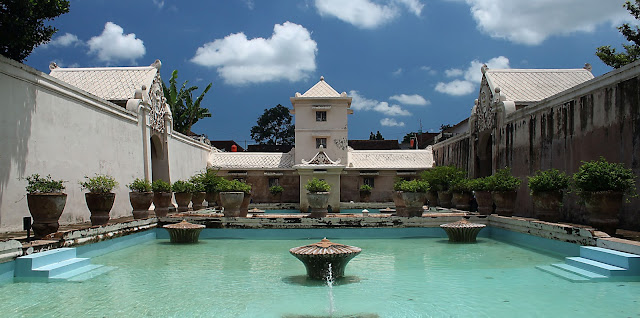Attractions In Yogyakarta
Prambanan
Prambanan is a collection of
massive Hindu temples (candi) built by the Mataram
Kingdom, rulers of central Java and defeaters of the Sailendra Dynasty.
A UNESCO World
Heritage Site, in almost any other country a magnificent ancient
monument on the scale of Prambanan would quickly be designated a national
symbol. In Indonesia, though, it is somewhat overshadowed by the even more
awe-inspiring nature of nearby Borobudur. The two sites are quite different in
style with Hindu Prambanan being a collection of sharp, jaggedly sculpted
towers in contrast to the vast horizontal bulk of BuddhistBorobudur.
As the largest Hindu temple in Southeast Asia, the beautiful and graceful temple of Prambanan is a magnificent spectacle and an icon of Indonesia’s cultural heritage.
 |
| Prambanan Temple |
 |
| Prambanan From Beside |
Malioboro Street
Malioboro is the most famous street in Yogyakarta. Located in the heart of Yogya, this is the city’s main street, and was once the ceremonial avenue for the Sultan to pass through on his way to and from the Keraton. During such occasions Malioboro would be festively decorated with flowers. Some say that the name Malioboro” derives from the name of the British governor Marlborough from the era when Britain ruled the archipelago, between 1811-1816.
 |
| Malioboro Street |
 |
| Cuisine In Malioboro |
 |
| Shop In Malioboro |
Imogiri
Imogiri, the official cemetery of the royal descendents from Yogyakarta and Surakarta, is about 17 kms southeast of Yogyakarta and easily accessible by the bus or car. The tombs lie within three main courtyards perched on a hilltop. Entry into the smaller courtyards housing the tombs of the princes is allowed only by visitors wearing traditional Javanese dress. Open on Monday 09.00 am to 12.00 pm and Friday 13.00 pm to 16.00 pm The cemetery is closed during the Moslem month of Ramadhan.
 |
| King Graveyard Imogiri |
 |
| Pine Wood |
Tamansari
It was built in 1758 by Sultan Hamengkubuwono I as a rest house and pleasure park for the Royal family. Tamansari means beautiful garden. It was badly damaged due to an earthquake in 1867. Some parts of it, for instance "Umbul Binangun" bathing pools have been restored.
It was built in 1758 by Sultan Hamengkubuwono I as a rest house and pleasure park for the Royal family. Tamansari means beautiful garden. It was badly damaged due to an earthquake in 1867. Some parts of it, for instance "Umbul Binangun" bathing pools have been restored.
The capital of ancient Islamic Mataram kingdom. The tomb of Mataram Kingdom's first king, Panembahan Senopati, is also located in this place. Before independence, Kotagede was the central economic district of Yogyakarta, as it held the largest marketplace and was home to many wealthy batik merchants. Although some ancient buildings have been modernized or replaced with newer buildings, Kotagede remains a prime example of ancient Javanese architecture and city structure. Now it is most famous as the "silver village" - Be sure to check out the local silver handicrafts when you tour the workshops there. Be aware that Kota Gede is too large to navigate on foot, so be prepared to hire a Rishaw if you plan to do any exploring off the main road, or if you want to get away from all of the silver shops.
 |
| Kota Gede Gate Palace |
Kaliurang
If you want to take a break from crowds and cities and immerse yourself in some natural beauty, then Kaliurang resort may be the place for you. Lying on the southern slopes of the majestic Mt Merapi, the quiet highland resort of Kaliurang is a peaceful escape from the heat and chaos of city life. This is a place to come to relax and rejuvenate and be energized by the fresh air. Visitors can spend days here unwinding, swimming and exploring. Kaliurang is famous for its green mountain scenery, forest air and adventurous hiking tracks.
 |
| Mount Merapi |














0 komentar: